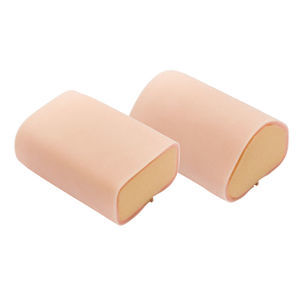
- Primary care
- Emergency medicine, Resuscitation
- Emergency care training manikin
- Sakamoto Model Corporation

- Products
- Catalogs
- News & Trends
- Exhibitions
Emergency care training manikin M167airway managementtorso

Add to favorites
Compare this product
Characteristics
- Application
- emergency care
- Procedure
- airway management
- Form
- torso
- Width
83 cm
(32.7 in)- Weight
14 kg
(30.9 lb)
Description
The closeness to a real living body, Makes realistic training possible
In securing an airway, tracheal intubation requires the highest skills and accompanies risks. In order for emergency medical staff to perform intubation, training in administering anesthetic in the operating room is a must.
However, there is a need to create a system where sufficient simulation using a mannequin can be performed before the training in the operating room.
The intubation models being used now, the sense of skin, movability of the jaw, and shape of epiglottis were not practical.
With these points in mind,as a guide model for intubation training for emergency medical staff, the was developed with the focus on the "delicacy of the living body."
The position of the pharynx, larynx, and epiglottis in relation to the cervical vertebra, and anatomical elements such as the axis of the oral cavity "pharynx" larynx have been taken into consideration. Not only durability, but also the delicacy of the human body has been considered, making it close to a real living body. Parts of the model are purposefully make to be damaged if handled roughly.
1. Realistic practice possible
It is possible to acquire the skill of both oral and nasal tracheal intubation.
It is possible to acquire the skill of supraglottic airway devise (such as Laryngeal mask airway, the esophageal gastric tube airway).
The tongue, epiglottis and the pharynx Epharynx have been reproduced such as a real living body.
Because the tongue and mouth are soft, usage of laryngoscope and training in securing the airway can be done in a manner close to a living body.
VIDEO
Catalogs
M167
1 Pages
Related Searches
- Demonstration simulator
- General care medical simulator
- Training manikin
- Upper body simulator
- Surgical simulator
- Pad simulator
- Injection simulator
- Portable simulation trainer
- Lower body simulator
- General care training manikin
- Vital sign simulator
- Upper body training manikin
- Emergency care simulation unit
- Woman simulator
- Puncture simulator
- Obstetrical/gynecological simulator
- Silicone simulation trainer
- Suture simulator
- Kit simulation trainer
- CPR training manikin
*Prices are pre-tax. They exclude delivery charges and customs duties and do not include additional charges for installation or activation options. Prices are indicative only and may vary by country, with changes to the cost of raw materials and exchange rates.



